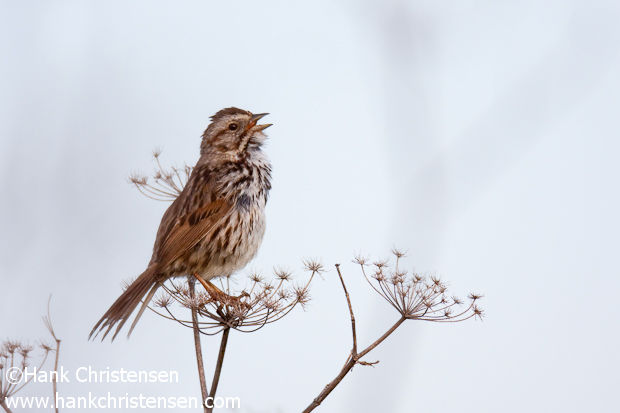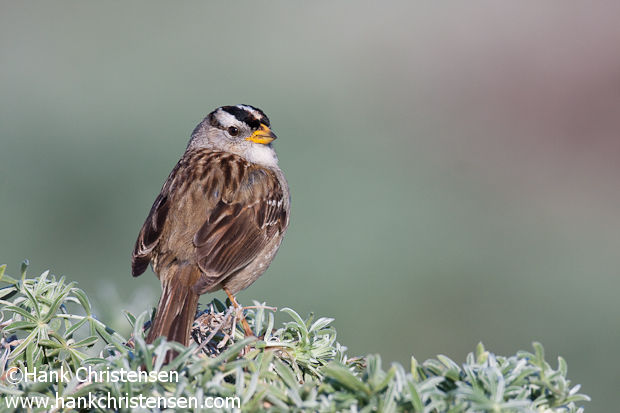
This week’s photo was taken recently at a local wetland area at the edge of the bay. White-crowned sparrows are among the more common sparrows in the area, along with song sparrows and house sparrows (though the latter are more likely to frequent the backyard bird feeder than flit around the bay trails). Juveniles are sometimes harder to spot because the crown of the head has yet to turn white, as seen in the photo above. Once this sparrow matures however, they are impossible to mistake.


